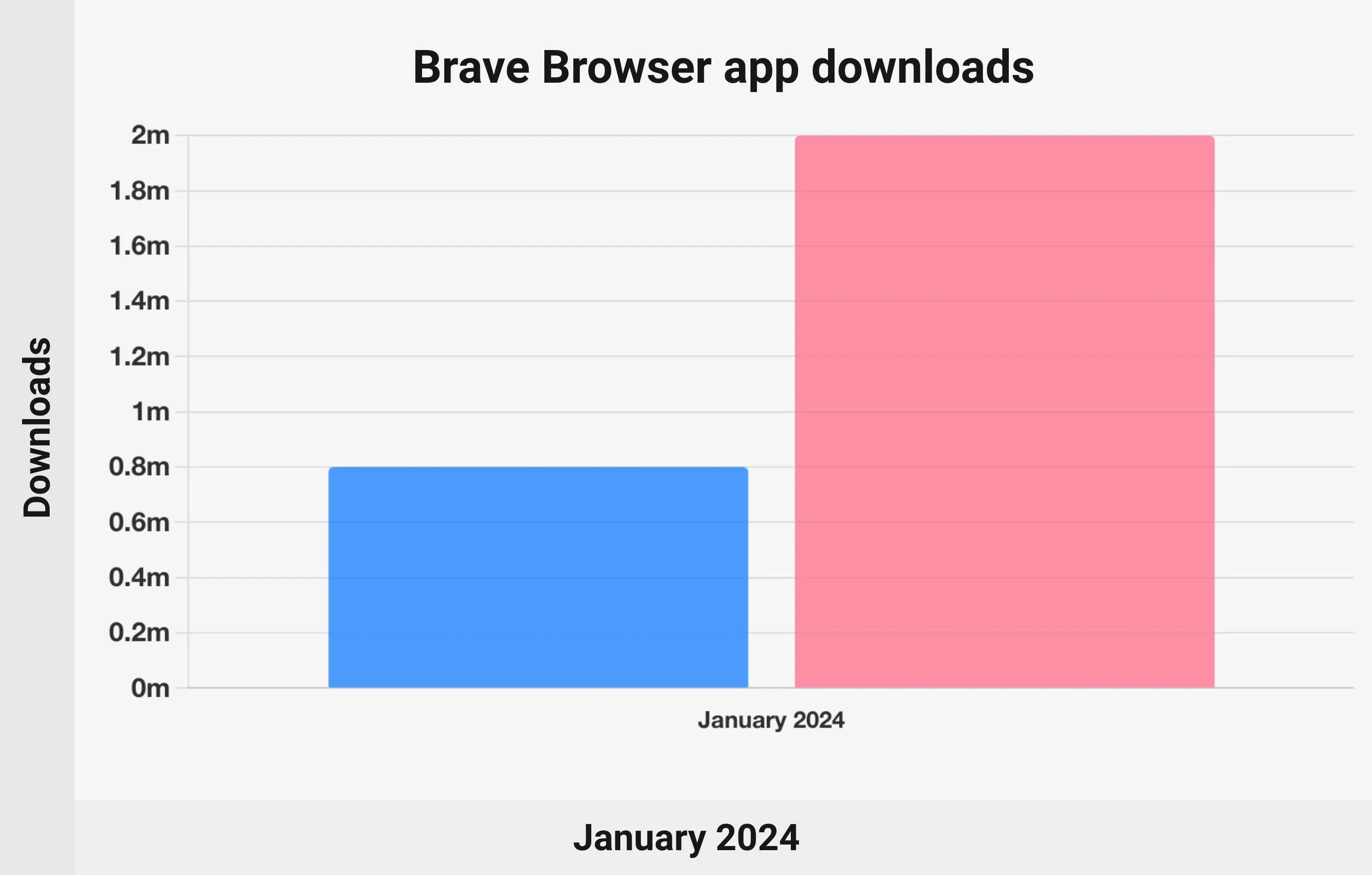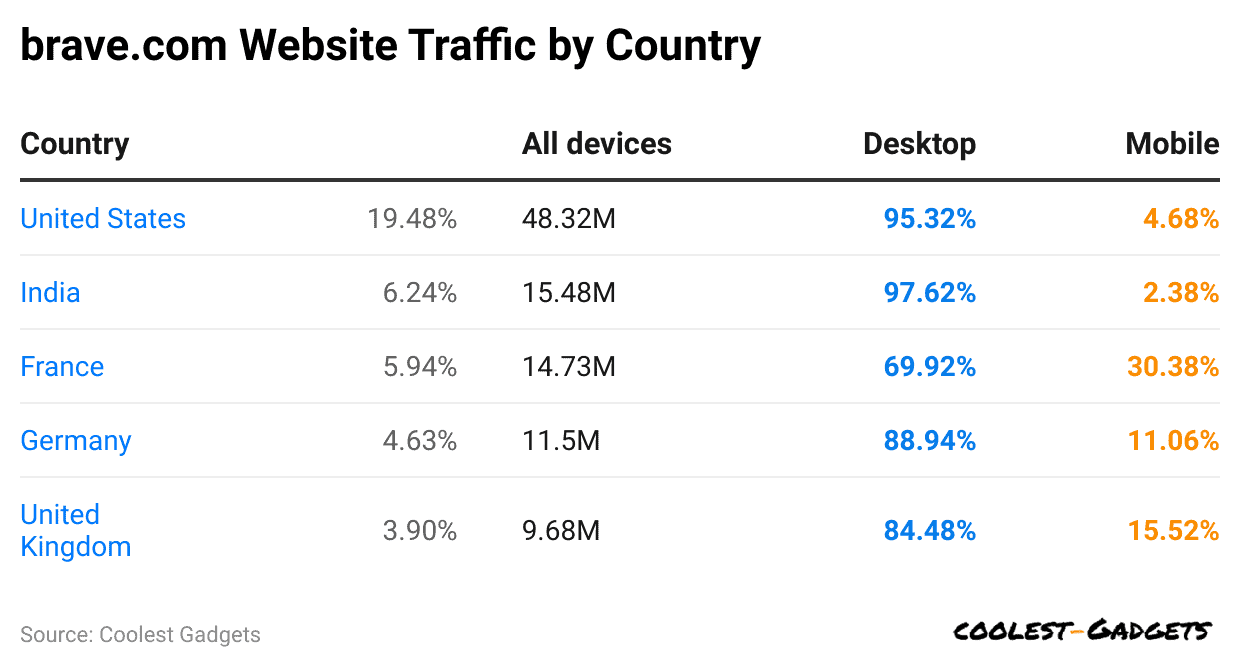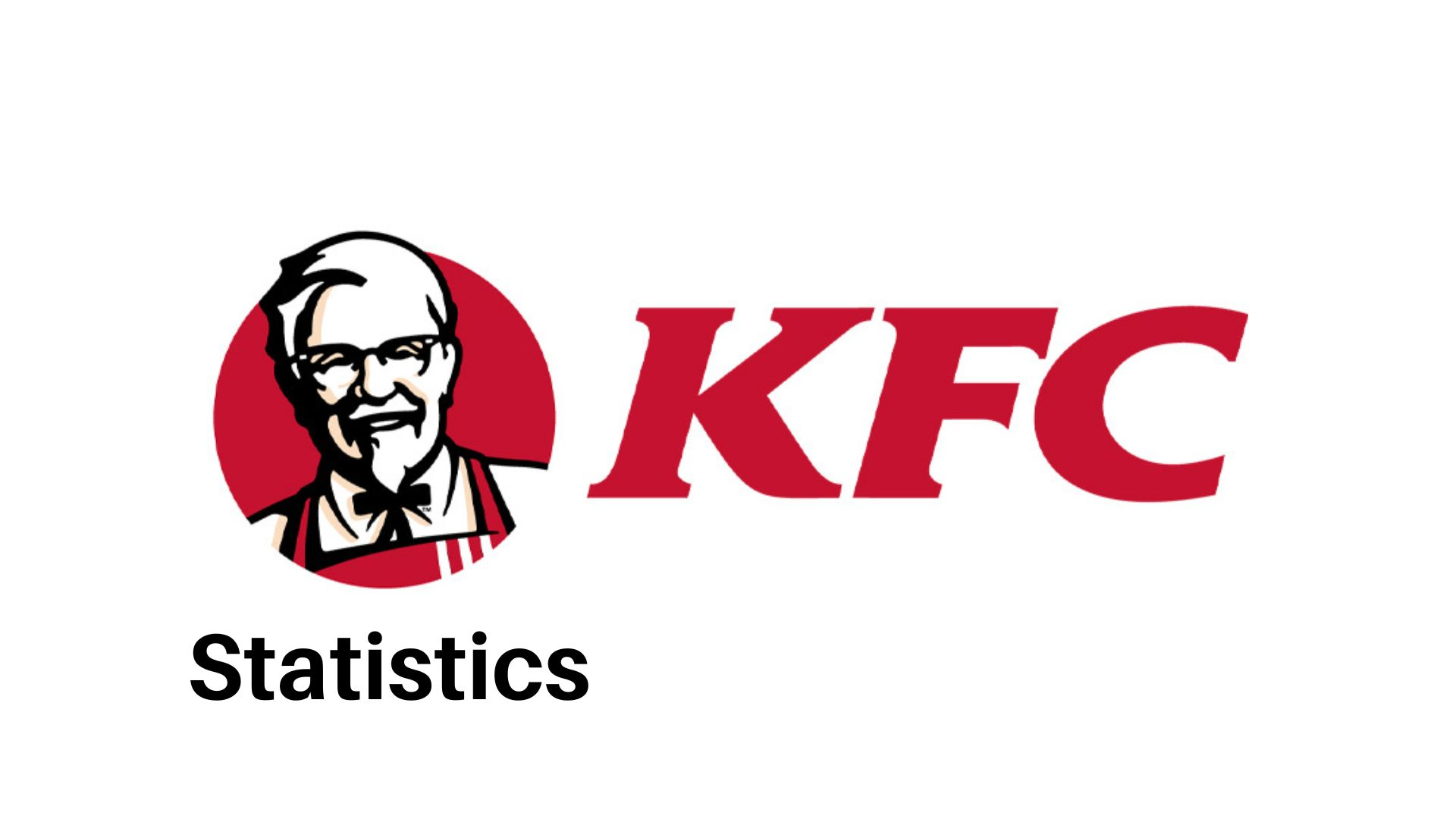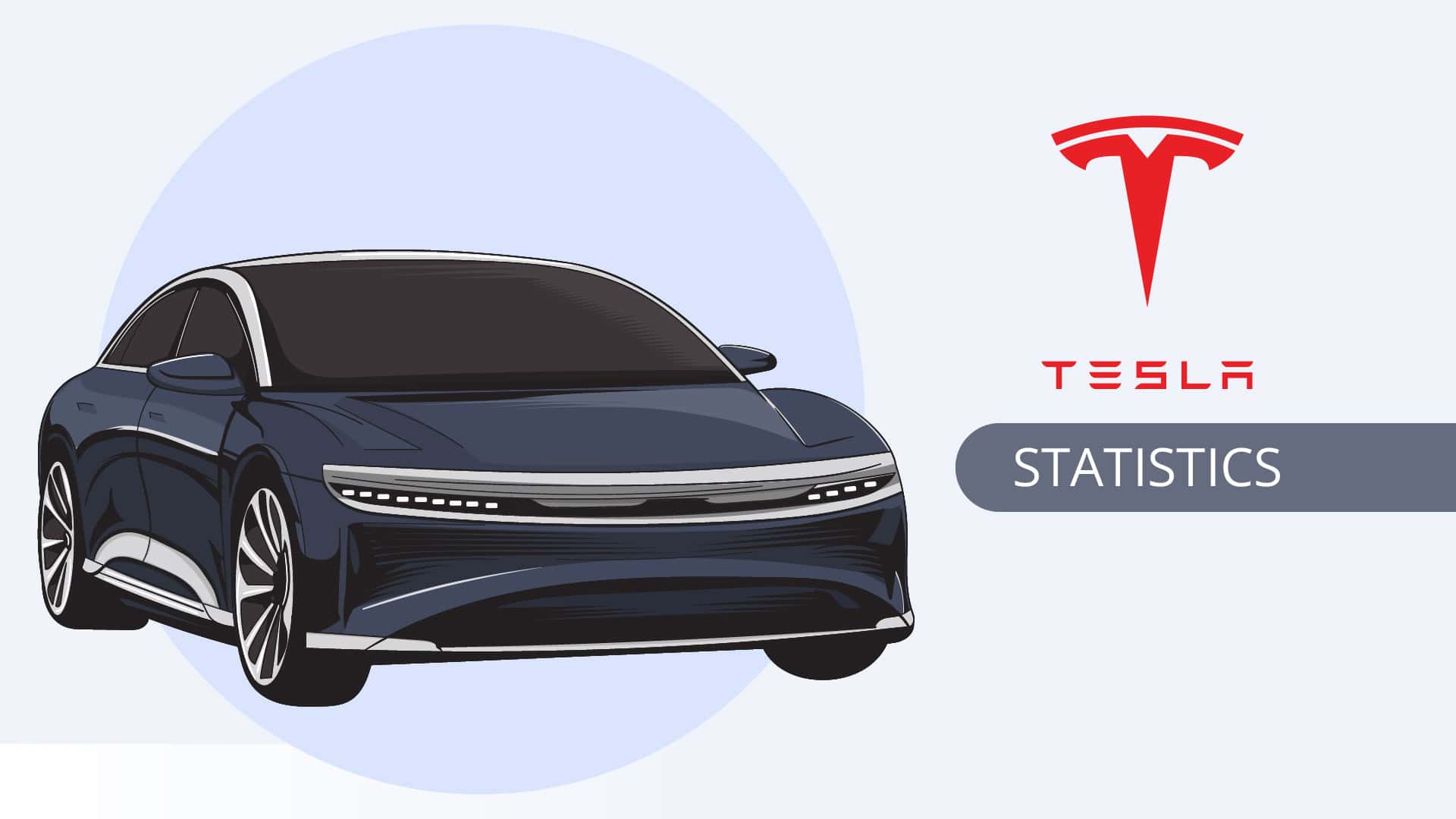Brave Browser Statistics By Employee Diversity, Users, Website Traffic and Market Analysis

Updated · Feb 23, 2025


TABLE OF CONTENTS
- Introduction
- Editor’s Choice
- General Brave Browser Statistics
- Brave Employee Diversity
- Number of Active Users
- Brave Browser App downloads
- Brave.com Website Traffic By Country
- Brave Browser Market Analysis
- Brave Browser vs. Competitors
- Key Features of Brave
- Implications for User Privacy
- Potential Impact on the Digital Advertising Landscape
- Conclusion
Introduction
Brave Browser Statistics: Brave, a relatively new entrant in the web browser market, has rapidly gained popularity due to its unique approach to user privacy and performance. Departing from the traditional advertising-based revenue model, Brave offers a more user-centric experience by blocking ads and trackers while providing users with the option to earn cryptocurrency through its Basic Attention Token (BAT) system.
This Brave Browser Statistics will delve into Brave’s key features, its implications for user privacy, and its potential impact on the digital advertising landscape.
Editor’s Choice
- Brave Browser Statistics show that, as of 2023, Brave Browser has crossed 57 million monthly active users.
- Brave claims that its browser runs 13.3% faster than Google Chrome. Benchmark tests proved this, showing a 250.97 score for Brave and a 217.56 score for Chrome.
- Within just 12 months of launch, the built-in search generated 2.5 billion queries, an average of 14.1 million queries every day.
- The company is female-oriented, with 55% female employees and 45% male employees.
- The average number of years an employee works at Brave Company is 4.0, and the average salary is $52,201.
- 14% of the employees share their ethnicities equally, with black or African American and Hispanic or Latino.
- According to taptwicedigital.com, Brave Browser generated 2 million installs and 100 million all-time downloads.
- Over the last 6 months of 2024, 33.33% of traffic was observed by mobile devices, while 66.67% came from desktop.
- In 2024, Brave’s ad revenue grew to $30 million, showing a steady increase in brands embracing this privacy-centric approach to reaching their audience.
- A vast share of Brave Browser users are male, representing 74.69%, while females represent 25.31%.
General Brave Browser Statistics
- Brave Browser Statistics show that, as of 2023, Brave Browser has crossed 57 million monthly active users.
- Within just 12 months of launch, the built-in search generated 2.5 billion queries, an average of 14.1 million queries every day.
- Android users have generated 100 million+ downloads in 2023 for Brave Browser.
- Brave claims that its browser runs 13.3% faster than Google Chrome. Benchmark tests proved this, showing a 250.97 score for Brave and a 217.56 score for Chrome.
- On average, brave browser is 43.5% quicker than Firefox.
- A vast share of Brave Browser users are male, representing 74.69%, while females represent 25.31%.
- The advertisements on Brave have a click-through rate of 8%.
Brave Employee Diversity
- 61% of the employees at Brave have white ethnic background.
- Brave Browser Statistics show that the company is female-oriented, with 55% female employees and 45% male employees.
- Furthermore, 14% of the employees share their ethnicities equally, with black or African American and Hispanic or Latino.
- The average number of years an employee works at Brave Company is 4.0, and the average salary is $52,201.
Number of Active Users
The following table shows that Brave Brower has reached 67.18 million active users per month. Brave Browser Statistics projects that it will reach 70.00 million by 2025.
| Monthly Active Users | Month, Year |
| 6 Million | July 2019 |
| 11.8 Million | January 2020 |
| 16.7 Million | July 2020 |
| 25.4 Million | January 2021 |
| 34.4 Million | July 2021 |
| 54.5 Million | January 2022 |
| 59.58 Million | July 2022 |
| 57.55 Million | January 2023 |
| 59.35 Million | July 2023 |
| 67.18 Million | January 2024 |
(Source: taptwicedigital.com)
Brave Browser App downloads

(Source: taptwicedigital.com)
According to taptwicedigital.com, Brave Browser generated 2 million installs and 100 million all-time downloads. Brave Browser Statistics show that, as of January 2024, iPhone users downloaded the app 800,000 times.
Brave.com Website Traffic By Country

(Reference: semrush.com)
Brave Browser Statistics show that the United States contributes the most to the platform, with the majority of users accessing it from desktop devices. Overall, the top 5 leading countries with the highest traffic on brave.com have preferred desktop browsers. In addition, over the last 6 months of 2024, 33.33% of traffic was observed by mobile devices, while 66.67% came from desktop.
Brave Browser Market Analysis
In 2024, Brave Browser has maintained a strong position in the global browser market, showing significant popularity in regions like North America, Europe, and Asia. With an emphasis on privacy and ad-blocking features, Brave attracts users seeking enhanced online security. Currently, Brave holds about 1.8% of the global browser market share, a figure that continues to grow, particularly in privacy-conscious regions.
North America
Brave Browser Statistics reveal that, in North America, Brave Browser has gained around 3% market share. Its appeal is primarily due to its privacy protections and the use of the Basic Attention Token (BAT) reward system, which provides users incentives in digital currency. Many U.S. users have turned to Brave as data privacy awareness grows, enabling the browser to capture a larger share in the competitive U.S. market.
Europe
In Europe, Brave captures approximately 2.5% of the browser market share. Users in European countries, especially Germany, France, and the UK, have shown interest in Brave due to GDPR, which emphasizes user data protection. The browser’s ad-blocking feature and reward system make it a preferred option for users who want control over their digital privacy.
Asia
Asia represents a growing market for Brave, with a 2% share, especially popular in regions like India and Japan. Brave’s privacy-centered approach has attracted users in these countries, where awareness of online data security is increasing. Its unique features, such as rewards in BAT, have resonated well with users who are exploring alternatives to mainstream browsers.
Brave Browser vs. Competitors
Compared with major competitors like Google Chrome, Safari, and Firefox, Brave is still a niche choice, but it is growing. Google Chrome leads globally with a 64% market share due to its extensive ecosystem and integration with Google services. Safari, mostly used on Apple devices, holds about 19% of the market, especially strong in North America and Europe. Firefox has a 3.4% share, appealing to privacy-conscious users similar to Brave, though without Brave’s ad-reward model. While Brave’s overall market share is modest, its focus on privacy and user control has positioned it uniquely in the browser market, setting it apart from traditional competitors.
A Deep Dive into Brave: Privacy and Performance
Brave Browser distinguishes itself through key features that prioritize user privacy, control over ads, and a decentralized reward system, positioning it as a significant player in reshaping the digital advertising landscape.
Key Features of Brave
Brave’s core features include a built-in ad blocker, tracking protection, and the Basic Attention Token (BAT) reward system. The browser automatically blocks third-party ads and trackers, making it faster and more secure than many other browsers. In 2024, Brave claims to block an estimated 10 billion trackers daily, significantly reducing potential data leaks and enhancing user privacy. This ad-blocking functionality increases browsing speed by up to 3 times, making it a preferred choice for users who prioritize both performance and privacy.
A distinctive feature of Brave is the BAT reward system, which allows users to earn digital tokens to view privacy-respecting ads. Brave reports that over 25 million active users participate in its BAT reward system, creating a unique ecosystem where users are directly compensated for ad engagement. This system is an alternative approach to conventional advertising, where user data is often tracked without consent.
Implications for User Privacy
By blocking trackers and restricting third-party cookies, Brave reduces the potential for data collection and targeted advertising. In traditional digital advertising, user data is continuously gathered and shared across various platforms, often without users’ explicit consent. Brave’s privacy measures eliminate third-party cookies, effectively preventing cross-site tracking. This setup helps users maintain control over their data, addressing growing concerns around data privacy and security. Brave also offers private browsing with Tor integration, adding an extra layer of anonymity, making it nearly impossible for external parties to track user behavior.
Brave’s privacy-first approach appeals to users who want a secure browsing experience. The browser’s 50% increase in users between 2022 and 2024 demonstrates rising demand for secure and private online tools. In the U.S. alone, where privacy regulations are becoming stricter, Brave has seen a 25% increase in users over the past year.
Potential Impact on the Digital Advertising Landscape
Brave’s BAT reward system challenges the traditional advertising model. In the existing digital ad ecosystem, companies spend billions on targeted ads, with the market valued at around $600 billion globally. However, much of this spending is tied to invasive data-tracking methods. Brave’s model redefines this relationship by allowing users to opt into ad experiences and earn BAT tokens. In 2024, Brave’s ad revenue grew to $30 million, showing a steady increase in brands that are embracing this privacy-centric approach to reach their audience.
With Brave, advertisers can connect with audiences who actively choose to view ads, leading to higher engagement rates. Brave reports that user engagement rates for BAT-based ads are up to 4 times higher than traditional digital ads, as users are more receptive to ads they opt to see. By providing an ad platform that doesn’t require invasive tracking, Brave could drive a shift toward a user-controlled advertising model that compensates users, respects privacy, and fosters trust between brands and consumers.
In summary, Brave’s privacy-focused features and BAT reward system provide an alternative to mainstream digital advertising. As user demand for privacy continues to grow, Brave’s impact on the digital advertising landscape could encourage other platforms to adopt similar models, ultimately reshaping how advertisers and consumers interact online.
You May Also Like To Read
Conclusion
In conclusion, Brave is a promising browser that offers a unique approach to user privacy and performance. Its ad-blocking feature and BAT system have the potential to disrupt the digital advertising landscape and create a more equitable ecosystem for online content.
While there are challenges to be addressed, Brave’s innovative approach could have a lasting impact on the way we browse the internet.
Sources

Pramod Pawar brings over a decade of SEO expertise to his role as the co-founder of 11Press and Prudour Market Research firm. A B.E. IT graduate from Shivaji University, Pramod has honed his skills in analyzing and writing about statistics pertinent to technology and science. His deep understanding of digital strategies enhances the impactful insights he provides through his work. Outside of his professional endeavors, Pramod enjoys playing cricket and delving into books across various genres, enriching his knowledge and staying inspired. His diverse experiences and interests fuel his innovative approach to statistical research and content creation.











